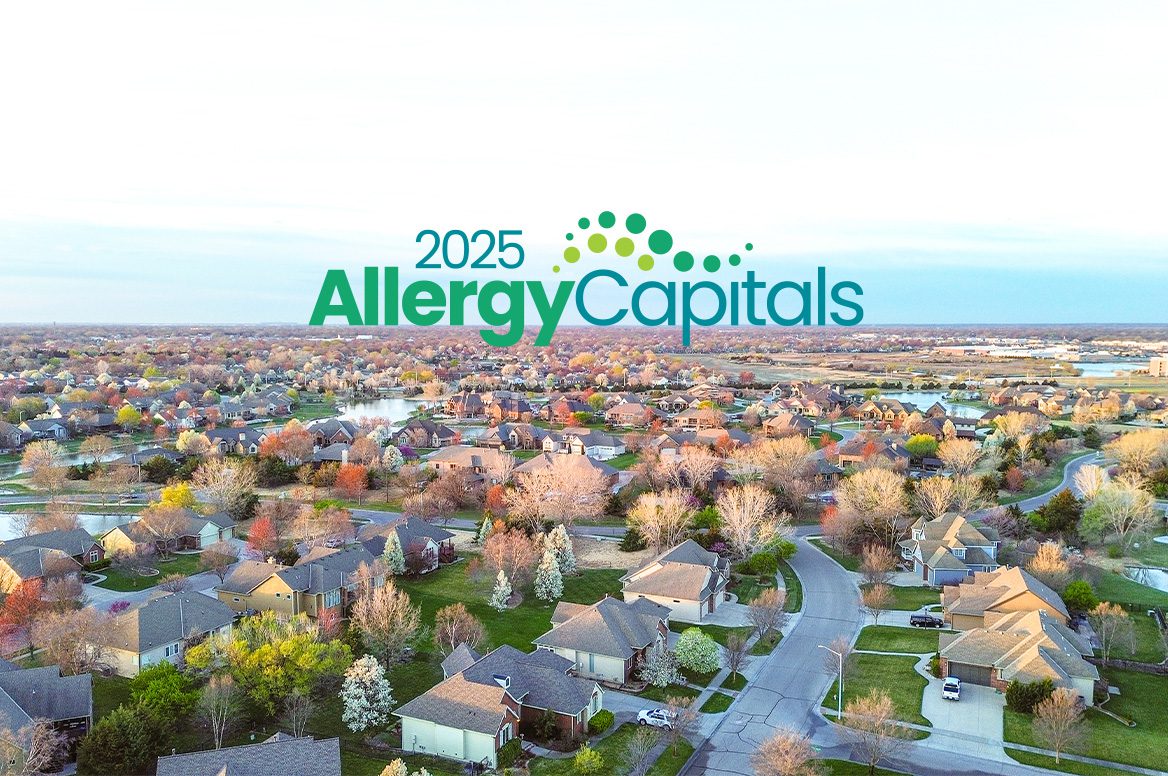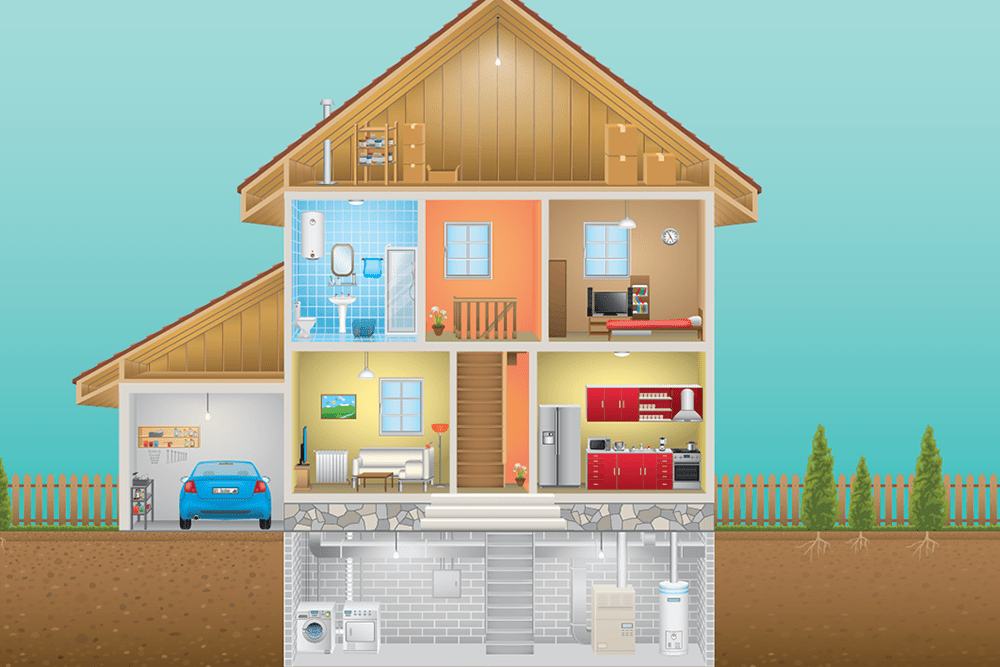Allergies
Grass Pollen Allergy
Grass pollen allergy is one of the most common causes of allergy symptoms. Grass pollen allergy is also seasonal allergic rhinitis (hay fever).
Grass causes most late spring and summer pollen allergy symptoms during April through early June.1 But in warmer parts of the country, it can be found year-round. It can sometimes overlap with tree pollen and weed pollen seasons.
Grass pollen is light and easily carried by the wind. So even if you aren’t allergic to the grass near your home, you could still come into contact with grass pollen from other locations.
What Are the Symptoms of a Grass Pollen Allergy (Seasonal Allergic Rhinitis)?
If you have a grass pollen allergy, you will only have symptoms when the pollen you are allergic to is in the air. Symptoms of a seasonal allergic rhinitis include:
- Runny nose (also known as rhinorrhea – this is typically a clear, thin nasal discharge)
- Stuffy nose (due to blockage or nasal congestion)
- Postnasal drip (mucus runs from the back of your nose down your throat)
- Sneezing
- Itchy nose, eyes, ears, and mouth
- Red and watery eyes
- Swelling around the eyes
- Shortness of breath, coughing, and/or wheezing
If you have asthma and are allergic to grass pollen, you may have allergic asthma. This means grass pollen triggers your asthma symptoms.
What Types of Grasses Trigger the Most Allergies?
There are hundreds of types of grasses, but only a few cause allergy symptoms. Your location may determine which grasses may cause your symptoms.
The most common grasses that cause allergies are:
- Bahia
- Bermuda
- Fescue
- Johnson
- Kentucky blue
- Orchard
- Rye
- Sweet vernal
- Timothy
If it seems like grass pollen season is more intense and lasts longer than it used to, you aren’t imagining it. Climate change is also increasing carbon dioxide and is leading to longer growing seasons. This means higher amounts of grass pollen released during the allergy season.
Can a Grass Allergy Make Me React to Certain Foods?
If you are allergic to certain pollens, such as Timothy or orchard grass pollen, you may have allergy symptoms in your mouth and/or around your lips when eating certain foods. The name of this reaction is pollen-food allergy syndrome (PFAS), also called oral allergy syndrome (OAS).
PFAS happens because some grass pollen is similar to the protein in some fruits, vegetables, and nuts.2 Your immune system gets confused and can’t tell the difference between the two. Eating these foods may cause your mouth, lips, tongue, and throat to itch or swell.
You may be able to eat foods that cause PFAS symptoms if you remove their skins and/or cook them. Heat affects the proteins (breaks them down), so you may be able to eat these foods cooked instead of raw. For example, a fresh tomato may cause symptoms, but a person with PFAS may be able to eat cooked marinara sauce or ketchup without symptoms.
Timothy and orchard grass pollen can cross-react and may trigger pollen-food allergy symptoms when you eat:
- Cantaloupe
- Honeydew
- Orange
- Tomato
- Watermelon
- White potato
What Is the Treatment for Grass Pollen Allergy?
If you think you may be allergic to grass pollen, see a board-certified allergist to confirm the allergy. To diagnose a grass pollen allergy, the doctor will ask you about your medical history and do a physical exam. If they think you have a grass pollen allergy, they may order an allergy skin test or blood test. Your doctor will compare your test results with your history and physical exam to diagnose a grass pollen allergy.
There is no cure for a grass pollen allergy, but you can manage it. There are many allergy treatment options to help you.
Here are some steps to managing your grass pollen allergy:
1. Track the grass pollen count for your area. The local news often reports the type of pollen and count for your area, especially when pollen is high. You also can check for your area’s pollen counts from the American Academy of Allergy, Asthma & Immunology’s (AAAAI) National Allergy Bureau™.
2. Stay indoors with central air conditioning when the pollen count is high, if possible. Keep your windows in your house and car closed too, if possible. Get a Certified Asthma & Allergy Friendly® air filter and/or HEPA filter for your air conditioner.
3. Prevent pollen from coming into your home. If you spend a lot of time outside during peak pollen time:
- Take your shoes off outside
- Don’t wear your “outside” clothes to bed
- Cover your hair when outside or wash it at night
- Wipe off pets before they enter your home
- Shower after coming inside your home after being outdoors for a long time
- Keep windows closed, if possible, during pollen season or peak pollen times.
- Dry your clothes in a clothes dryer or on an indoor rack, not on an outdoor line.
4. Take allergy medicines and start treatment before grass pollen season starts in your area. Find out what time of year grass pollen starts to appear in your area so you can start allergy treatment at least 2 weeks before pollen season begins. Many over-the-counter medicines work well to control pollen allergy symptoms. They can also help eye, nose, and airway symptoms.
5. Talk with an allergist about immunotherapy. There are two types: allergy shots and sublingual immunotherapy (SLIT). This type of treatment may help give you long-term relief. If you have allergic asthma, your Asthma Action Plan may include some of these allergy treatments to help you keep your asthma under control.
Allergy Medicine Guide
Nasal rinse: Using a saline (saltwater) nose rinse can help cut down mucus and rinse allergens out of your nose. Remember to use these as directed.
Corticosteroid nasal sprays reduce inflammation (swelling) in the nose and block allergic reactions. They are the most effective medicine type for allergic rhinitis because they can reduce all symptoms, including nasal congestion. They can also provide some relief for eye allergy symptoms. Nasal corticosteroids have few side effects (e.g., headache, nose bleeds or irritation).
Corticosteroid nasal sprays: FLONASE®, Nasacort®, Nasonex™, Nasalide/Flunisolide, Omnaris™, QNASL®, RHINOCORT®
Antihistamines relieve sneezing and itching in the nose and eyes. They also reduce a runny nose and, to a lesser extent, nasal stuffiness. Look for a long-acting, non-drowsy antihistamine. The newer medicines do not carry the risk of toxicity and death that has been associated with older antihistamines like diphenhydramine.
Non-steroidal antihistamine nasal sprays (may cause drowsiness): Astelin®, Astepro®, Patanase®
Non-drowsy oral antihistamines: Allegra®, CLARINEX®, Claritin®
Oral antihistamines that may cause drowsiness in some individuals: Xyzal®, ZYRTEC®
Cetirizine (ZYRTEC®) and loratadine (Claritin®) are the antihistamines of choice for use during pregnancy. They have established safety profiles and are effective in treating allergy symptoms during pregnancy.
Diphenhydramine and related short-acting antihistamines (like promethazine) should be avoided. Diphenhydramine (known under the brand name BENADRYL®) is not a good choice to take for allergy symptoms because of its short-term action to manage symptoms and several known negative side effects. The major side effects of diphenhydramine and older generation antihistamines include drowsiness, sedation, dry mouth/eyes, and fatigue. This can also impair alertness, concentration, multitasking, and memory. In turn, this antihistamine can affect important functions, such as learning and test performance in children, as well as operation of machinery and cars in adults. As these medicines can impair you, they can affect work performance and safety.
Eye drops: Allergy eye drops can relieve eye burning, itchiness, redness, increased tearing, and swelling.
Antihistamine eye drops: Azelastine/Optivar, Bepreve®, Elestat®, LASTACAFT®, Opcon-A®, Systane® ZADITOR®, Patanol™, and Pataday®
Decongestants help shrink the lining of the nasal passages and relieve nasal stuffiness. They generally are only used for a short time (3 days). Read the instructions carefully and do not use them for extended amounts of time. Extended use of decongestant nasal sprays can cause a rebound effect that worsens your congestion. Make sure you talk with your doctor about the appropriate use of decongestants, limitations, and potential side effects.
Nasal spray decongestants: Afrin®, Vicks Sinex™
Oral decongestants: SUDAFED®
Some allergy medicines combine an antihistamine with a decongestant. Certain types of combo medicines (such as the ones that contain pseudoephedrine as the decongestant) are available “behind the counter”. Behind-the-counter products are available without a prescription but have limitations on purchases due to state and federal laws. Talking with pharmacy staff is generally necessary to obtain these types of allergy medications.
Decongestant + antihistamine combos: Allegra-D®, Claritin-D®, Clarinex-D, ZYRTEC-D®
Check with your doctor before using decongestants if you have high blood pressure, heart disease, glaucoma, thyroid disease, or trouble urinating. They may cause issues if you have any of these conditions and they may interact with other prescription medicines.
Federal Regulations on Decongestants
The oral form of phenylephrine (PE) is a common active ingredient in many OTC decongestants. An expert panel of the FDA reviewed studies which showed oral PE is not effective at relieving nasal congestion in commonly used doses. The FDA is proposing to end use of oral PE. This would remove these products from the U.S. market. The change would not affect the nasal spray forms of PE.
Decongestants that contain pseudoephedrine (PSE) require photo identification and are only available to purchase behind the pharmacy counter.
Cromolyn sodium is a nasal spray that blocks your body from releasing chemicals (such as histamine and leukotrienes) that cause allergy symptomsincluding histamine and leukotrienes. This medicine has few side effects, but you must take it three to six times a day. For optimal results, this medication should be used daily during your allergy season. It can be started up to one week before your allergy season begins.
Cromolyn sodium nasal spray: NasalCrom®
Leukotriene receptor antagonists (or modifiers) block the action of important chemical messengers (other than histamine) that are involved in allergic reactions. These medicines help manage asthma and allergic rhinitis symptoms. These medications are taken orally. How often you take them depends on the specific drug. Discuss the appropriate use of these medications with your doctor, including the risks and benefits of therapy.
Options include: ACCOLATE®, SINGULAIR®*, Zyflo CR®
*Note: Montelukast (brand name SINGULAIR®) has a black box warning because it can cause serious mental health side effects. This is a safety warning from the Food and Drug Administration (FDA). This means you need to be aware of a drug’s side effects or important instructions for safe use of the drug. We encourage you to speak with your health care provider before, during, and after the start of any new medicine. If your doctor recommends montelukast, talk with them about possible risks and concerns.
Medical Review: March 2025 by John James, MD
Should I Move to Get Relief from My Grass Pollen Allergy?
Grasses that produce allergenic pollen appear in every state. If you move, you may get some relief for a short time. But you can develop allergies to the grasses in your new area in a few years. Instead, work with an allergist on a solid allergy treatment plan.
Closed
References
- American Academy of Allergy, Asthma, & Immunology. (2023). Mowing Down Your Grass Allergies. https://www.aaaai.org/tools-for-the-public/conditions-library/allergies/mowing-down-your-grass-allergies
- Oral Allergy Syndrome Symptoms, Diagnosis & Treatment | AAAAI. (2024, January 10). American Academy of Allergy, Asthma & Immunology. https://www.aaaai.org/Tools-for-the-Public/Conditions-Library/Allergies/Oral-allergy-syndrome-(OAS)
Medical Review: August 2024 by Mitchell Grayson, MD
Allergy Capitals
Your location can have an impact on your seasonal allergies. AAFA’s Allergy Capitals™ report looks at the top 100 most challenging cities in the continental United States to live with seasonal pollen allergies.














